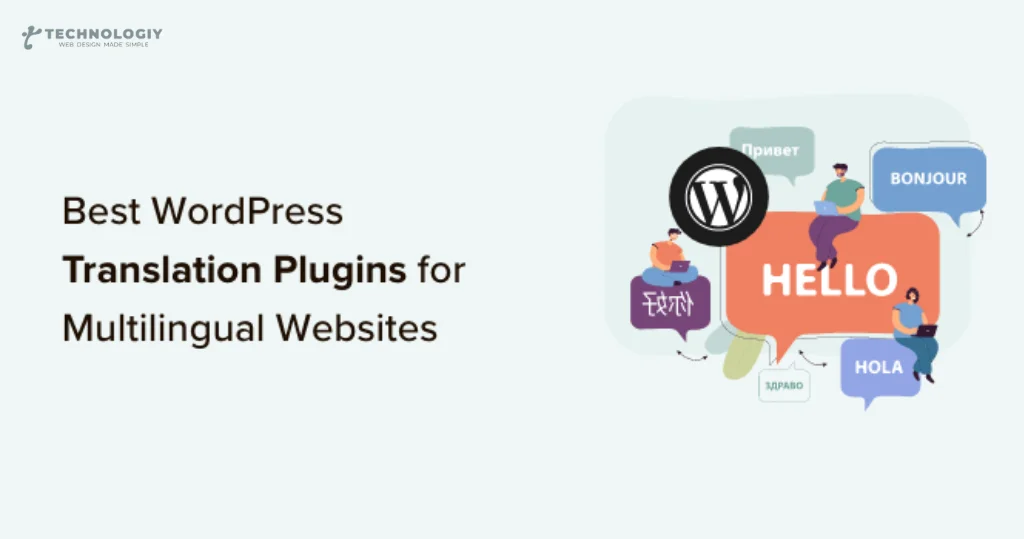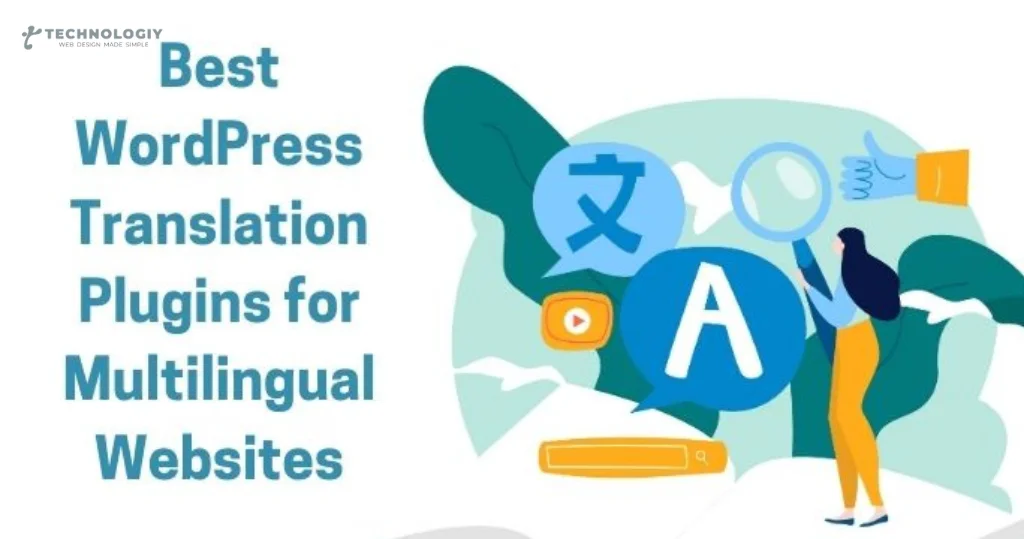The Significance of Website Translation: Unlocking the Global Potential In this digital era, the importance of having a strong online presence cannot be overstated. With the internet connecting people from different corners of the world, businesses now have the opportunity to tap into a global market like never before. However, to truly capitalize on this potential, it is crucial to break down language barriers through website translation. In this blog post, we will explore the significance of website translation, particularly for Translation for WordPress Websites, and how it can unlock tremendous growth opportunities for businesses.
Translation for WordPress Websites:
Bridging the Translation for WordPress Websites, a popular content management system (CMS), powers millions of websites across the globe. Its user-friendly interface and extensive array of features make it a go-to choice for businesses of all sizes. However, without website translation, businesses using WordPress are limiting their reach to only English-speaking users.
By Translation for WordPress Websites, you can instantly open doors to an international audience. Whether your target market is in Europe, Asia, or any other region, website translation enables you to connect with potential customers in their native language. This personalized approach builds trust, enhances user experience, and ultimately leads to higher conversion rates.
Expanding Your Reach:
Going Global with Website Translation The Internet has transformed the way businesses operate, making it easier than ever to reach a global audience. However, to truly expand your reach and tap into new markets, website translation is a non-negotiable strategy.
Breaking Language Barriers:
Language is a powerful tool that can either connect or divide people. By translating your website into multiple languages, you are breaking down the language barrier and ensuring that your message resonates with customers worldwide. This inclusivity fosters trust and helps you establish long-lasting customer relationships.
Capturing Local Search Traffic:
When people search for products or services online, they typically use their native language. By incorporating SEO keywords or synonyms in your translated content, you can optimize your website for local search engines. This increases your visibility in search results, driving organic traffic from your target markets.
Gaining Competitive Advantage:
In today’s global marketplace, businesses that cater to the diverse needs of customers are more likely to gain a competitive edge. By offering a multilingual website, you are positioning yourself ahead of competitors who have not yet embraced website translation. This sets you apart as a forward-thinking, customer-centric brand.
Boosting User Experience:
A seamless user experience is crucial for keeping visitors engaged and converting them into customers. By translating your website, you are ensuring that users can navigate effortlessly through your content, understand your offerings, and make informed purchasing decisions. This enhances user satisfaction and improves overall conversion rates.
Cultivating Brand Trust:
Trust is the foundation of any successful business relationship. By speaking to customers in their native language, you are showing them that you value their culture and understand their unique needs. This fosters a sense of trust in your brand, leading to increased customer loyalty and advocacy.

Assessing the Need for Content Translation:
Translation for WordPress WebsitesIn the digital era, where borders are virtually non-existent, businesses are expanding their reach to international markets. One of the key challenges faced by these businesses is breaking the language barrier. A multilingual website can play a crucial role in reaching out to a wider audience and ensuring global success. For Translation for WordPress Websites, translation becomes even more significant as it opens up new opportunities for growth and engagement. In this blog post, we will assess the need for content translation, specifically focusing on Translation for WordPress Websites.
Why Translation Your WordPress Websites?
Reach a Global Audience:
By Translation for WordPress Websites, you can connect with potential customers from different countries and regions, thereby increasing your global reach. This can result in higher traffic, improved user engagement, and ultimately, increased sales.
Enhance User Experience:
When users visit a website that is available in their native language, they feel more comfortable and connected. Translation for WordPress Websites ensures that your content is easily accessible and understandable to visitors from different linguistic backgrounds, leading to a seamless user experience.
Boost SEO and Organic Traffic:
Translation for WordPress Websites can significantly improve your search engine optimization (SEO) efforts. By targeting keywords in different languages, you have the opportunity to rank higher in search engine results pages (SERPs) for specific local markets. This can drive organic traffic and increase your visibility in the international landscape.
Build Trust and Credibility:
Offering content in multiple languages signals to your audience that you value their needs and are committed to providing a personalized experience. This builds trust and credibility, making visitors more likely to engage with your brand and convert into loyal customers.
Stay Ahead of Competitors:
In today’s competitive digital landscape, staying ahead of your competitors is crucial. Translation for WordPress Websites gives you a competitive edge by tapping into markets that your competitors may have overlooked. This can help you establish a strong presence in new markets and expand your customer base.
How to Assess the Need for Content Translation:
Analyze Website Traffic:
Start by analyzing your website traffic to identify where your visitors are coming from. This data can help you determine which regions or countries are generating significant traffic but may not be converting due to language barriers. Focusing on these areas can be a good starting point for content translation.
Understand Target Market:
Conduct market research to understand the language preferences and cultural nuances of your target market. This will help you determine which languages to prioritize for translation and adapt your content accordingly.
Assess International Opportunities:
Identify international markets with high growth potential and assess the competition in those markets. This will give you insights into whether Translation for WordPress Websites can give you a competitive advantage and help you tap into new customer segments.
Leverage Translation Plugins:
Translation for WordPress Websites offers various translation plugins that can simplify the translation process. These plugins allow you to translate your content seamlessly, making it easier to maintain and update your multilingual website.
Consider Budget and Resources:
Assessing the need for content translation also involves considering the financial implications and resources required. Determine the budget and resources available for translation and prioritize languages accordingly.
SEO Strategies for Multilingual Sites:
Translation for WordPress Websites In today’s globalized world, having a multilingual website is crucial for businesses looking to expand their reach and connect with a diverse audience. If you have a WordPress website and want to optimize it for search engines in multiple languages, implementing effective SEO strategies is essential. In this blog post, we will explore some practical SEO tips specifically tailored for Translation for WordPress Websites.
Choose the Right Translation Plugin:
When it comes to Translation for WordPress Websites, selecting the right translation plugin is key. There are several reliable translation plugins available, such as WPML (Translation for WordPress Websites For Multilingual Plugin), Polylang, and Weglot. These plugins not only facilitate the translation process but also offer SEO-friendly features that can enhance your website’s visibility in search engine results pages (SERPs).
Implement SEO-Friendly URLs:
To ensure your multilingual website is easily discoverable by search engines, it’s crucial to have SEO-friendly URLs for each translated page. Instead of using generic URLs, opt for language-specific URLs that accurately reflect the content of each translated page. For example, yourwebsite.com/en/about-us for the English version and yourwebsite.com/es/sobre-nosotros for the Spanish version. This way, search engines can better understand and rank your translated content.
Conduct Multilingual Keyword Research:
Just like with any SEO strategy, conducting keyword research is essential for multilingual websites. Identify the most relevant keywords for each target language and incorporate them naturally throughout your translated content. Tools like Google Keyword Planner, SEMrush, and Ahrefs can help you identify popular and relevant keywords in different languages.
Optimize Meta Tags and Descriptions:
Meta tags and descriptions play a crucial role in SEO, as they provide search engines and users with a brief summary of a web page’s content. Ensure that your translated pages have unique meta tags and descriptions that accurately reflect the content in each language. Include your target keywords naturally within these elements to improve your website’s visibility in SERPs.
Localize Content:
When translating your website, it’s important to go beyond mere word-for-word translations. Localization involves adapting your content to suit the cultural nuances and preferences of your target audience. This includes using localized keywords, optimizing images with alt tags in the target language, and ensuring that your translated content aligns with local search trends.
Build Language-Specific Backlinks:
Backlinks are a crucial ranking factor in SEO. While building backlinks for your main website is important, don’t neglect the importance of building language-specific backlinks for your translated pages. Get involved in local online communities, reach out to relevant influencers and bloggers in each target language, and aim to earn high-quality backlinks from reputable websites within each language community.
Monitor and Analyze Performance:
Regularly monitoring and analyzing the performance of your multilingual website is crucial to identify areas for improvement. Utilize tools like Google Analytics and Search Console to track organic traffic, user behavior, and keyword rankings in different languages. By analyzing this data, you can uncover insights that will help you refine your SEO strategies and improve your website’s overall performance.
